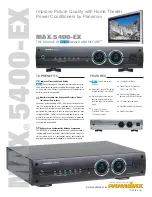
D-2
BE1-CDS240 Settings Calculations
9365200990 Rev F
Table D-1. Example 1 Specifications
SPECIFICATIONS HIGH
SIDE LOW
SIDE TERTIARY
Nominal voltage and taps
230 kV
+2.5%, 5%
115 kV
+10%, auto, line end
connection
13.8 kV
+2.5%, 5%
MVA 3 stage cooling @ 55
O
C
& overload to 65
O
C
150/200/250/280 150/200/250/280 35/47/58/65
Transformer connection
Wye-Auto
Wye-Auto
Delta
Impedance (150 MVA base)
H-L: 5.5%; H-T: 30% L-T: 25%
Full Load Current (FLC)
150 MVA: 377A
280 MVA: 703A
150 MVA: 753A
280 MVA: 1406A
35 MVA: 1464 A
65 MVA: 2719 A
(280 MVA: 11714 A)
CT connection
Wye
Wye
Wye
Relay Input #
1
2
3
CT ratio, max
800:5
2000:5
5000:5
CT ratio, tap
800:5
1500:5
4000:5
CT secondary @ max
primary MVA
4.39A (280 MVA)
4.69 A (280 MVA)
3.40 A (65 MVA)
(14.64 A @ 280 MVA)
CT thermal rating factor
(max continuous current)
2.0 (10 A)
2.0 (10 A)
1.5 (7.5 A)
CT accuracy class at full
ratio
C400 C400 C400
CT resistance at full winding
0.47
0.76
1.5
CT Resistance at Tap
0.47
0.57
1.2
One way CT to relay lead
resistance
0.3
0.3
0.3
Through fault current
3-phase: 6,900 A
SLG: 8,100 A
3-phase: 8,900
SLG: 9,800
3-phase: 24,600
SLG: 0
To prevent a misoperation of a relay during an external fault, the CTs must be sized to reproduce the
appropriate level of secondary AC voltage that the CT will see during the external fault with some level of
safety margin to account for the effects of DC offset. The usual approach to checking CT performance is
to check only the performance of the CT closest to the external fault, and then perform the check on
faults on all sides of the transformer. A more complete approach would be to check what every CT sees
for every fault. This can be a detailed task and some fault analysis programs are not well suited to
providing fault data in the branches remote from the fault. The example calculations below do not perform
this more involved approach.
Another aspect of CT performance is how well it will reproduce current during an internal fault. If a CT will
adequately perform during an external fault, it is typically assumed that it will adequately perform during
an internal fault. One reason is that internal faults of a level that will cause CT saturation will also tend to
cause high levels of tripping current and, hence, fast tripping. Even if the CT saturates during an internal
fault due to DC offset, the DC is transient in nature and the effect will be to only delay tripping a few
cycles. Hence, the CT does not have to have the same level of safety margin as it does for external
faults. One means of checking CT performance during an internal fault is to verify it will adequately
reproduce the AC component of current during transformer inrush, typically assumed to be about ten
times rated current.
The test of CT performance addressed below is to determine the "Saturation Factor (
SF
)” that will be
seen by the CT closest to an external fault. The saturation factor is a measure of the AC voltage the CT
will see during an event divided by the CT's secondary AC voltage rating (one common measure of AC
voltage rating is the CT's C-class rating). See
Setting Note 3
for an involved discussion of
SF
. To obtain
good CT performance during external faults, an
SF
of less than 0.5 is preferred but due to DC offset
issues. Even lower
SF
ratings are desirable. For a CT to reproduce DC offset it needs to be highly
overrated when analyzed on an AC current and AC voltage basis. The preferred
SF
to aim for, though
likely not normally obtainable, is the inverse of the
X/R
ratio for the through fault. For example, if the
X/R
impedance ratio for the through fault is 10, an
SF
as near to 1/10 as possible is preferred. An analysis of
the effects of DC offset on CTs may be found in the paper on bus protection on the Basler Electric web
site (www.basler.com), "
Bus Protective Relaying, Methods and Application
."
Summary of Contents for BE1-CDS240
Page 2: ......
Page 8: ...vi BE1 CDS240 Introduction 9365200990 Rev F This page intentionally left blank ...
Page 38: ...1 28 BE1 CDS240 General Information 9365200990 Rev F This page intentionally left blank ...
Page 40: ...ii BE1 CDS240 Quick Start 9365200990 Rev F This page intentionally left blank ...
Page 152: ...ii BE1 CDS240 Metering 9365200990 Rev F This page intentionally left blank ...
Page 226: ...iv BE1 CDS240 Application 9365200990 Rev F This page intentionally left blank ...
Page 286: ...ii BE1 CDS240 Security 9365200990 Rev F This page intentionally left blank ...
Page 290: ...9 4 BE1 CDS240 Security 9365200990 Rev F This page intentionally left blank ...
Page 292: ...ii BE1 CDS240 Human Machine Interface 9365200990 Rev F This page intentionally left blank ...
Page 306: ...10 14 BE1 CDS240 Human Machine Interface 9365200990 Rev F This page intentionally left blank ...
Page 308: ...ii BE1 CDS240 ASCII Command Interface 9365200990 Rev F This page intentionally left blank ...
Page 342: ...11 34 BE1 CDS240 ASCII Command Interface 9365200990 Rev F This page intentionally left blank ...
Page 349: ...Figure 12 5 Horizontal Rack Mount Front View 9365200990 Rev F BE1 CDS240 Installation 12 5 ...
Page 361: ...Figure 12 17 Typical DC Connection Diagrams 9365200990 Rev F BE1 CDS240 Installation 12 17 ...
Page 372: ...12 28 BE1 CDS240 Installation 9365200990 Rev F This page intentionally left blank ...
Page 468: ...13 92 BE1 CDS240 Testing and Maintenance 9365200990 Rev F This page intentionally left blank ...
Page 512: ...14 42 BE1 CDS240 BESTCOMS Software 9365200990 Rev F This page intentionally left blank ...
Page 544: ...ii BE1 CDS240 Terminal Communication 9365200990 Rev F This page intentionally left blank ...
Page 550: ...ii BE1 CDS240 Settings Calculations 9365200990 Rev F This page intentionally left blank ...
Page 578: ...D 28 BE1 CDS240 Settings Calculations 9365200990 Rev F This page intentionally left blank ...
Page 579: ......









































